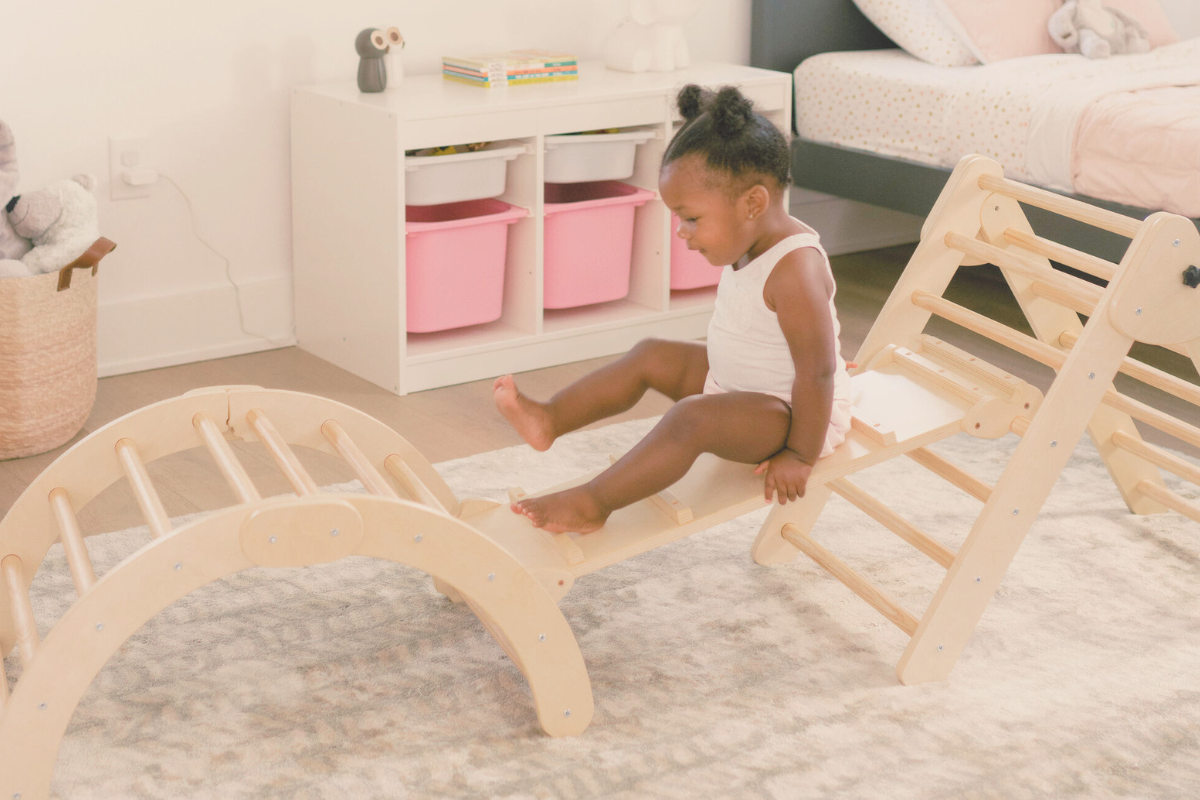What Are Montessori Toys? The Secret to Fun & Independent Learning
If you’ve ever wondered why Montessori toys are so popular, you’re not alone. These little treasures aren't just fun; they're secretly helping your child learn life skills, build independence, and spark creativity. And the best part? No batteries required!
Stick around as we break down what makes Montessori toys so special and how you can choose the perfect ones to nurture your child’s natural curiosity.
What Are Montessori Toys?
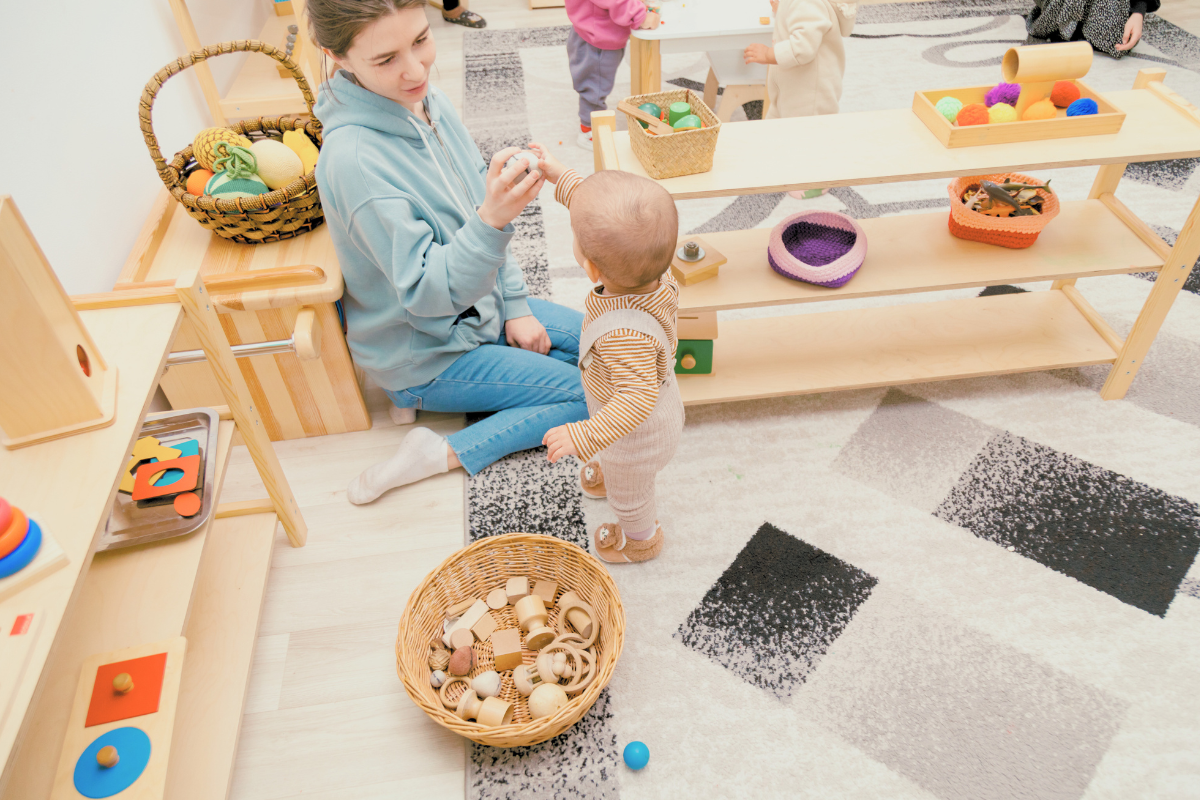
Montessori toys aren’t just for fun—they’re clever little tools designed to help your child grow and learn outside the classroom.
Maria Montessori, the Italian doctor-turned-educator who came up with the Montessori approach, believed that children are naturally curious. And parents and educators should be allowed to use their child's curiosity to tailor their education based on their own skills, talents, and interests.
So, Montessori toys are designed with the specific purpose of letting children learn on their own, without restrictions. The idea is simple: let kids learn at their own pace, driven by their natural curiosity.
But what exactly does it mean to have a Montessori-aligned toy? It’s all about simplicity and purpose. Montessori toys are crafted to spark curiosity through repetition and meaningful play. Unlike other toys, they’re often open-ended, meaning your child can use their imagination and creativity to explore.
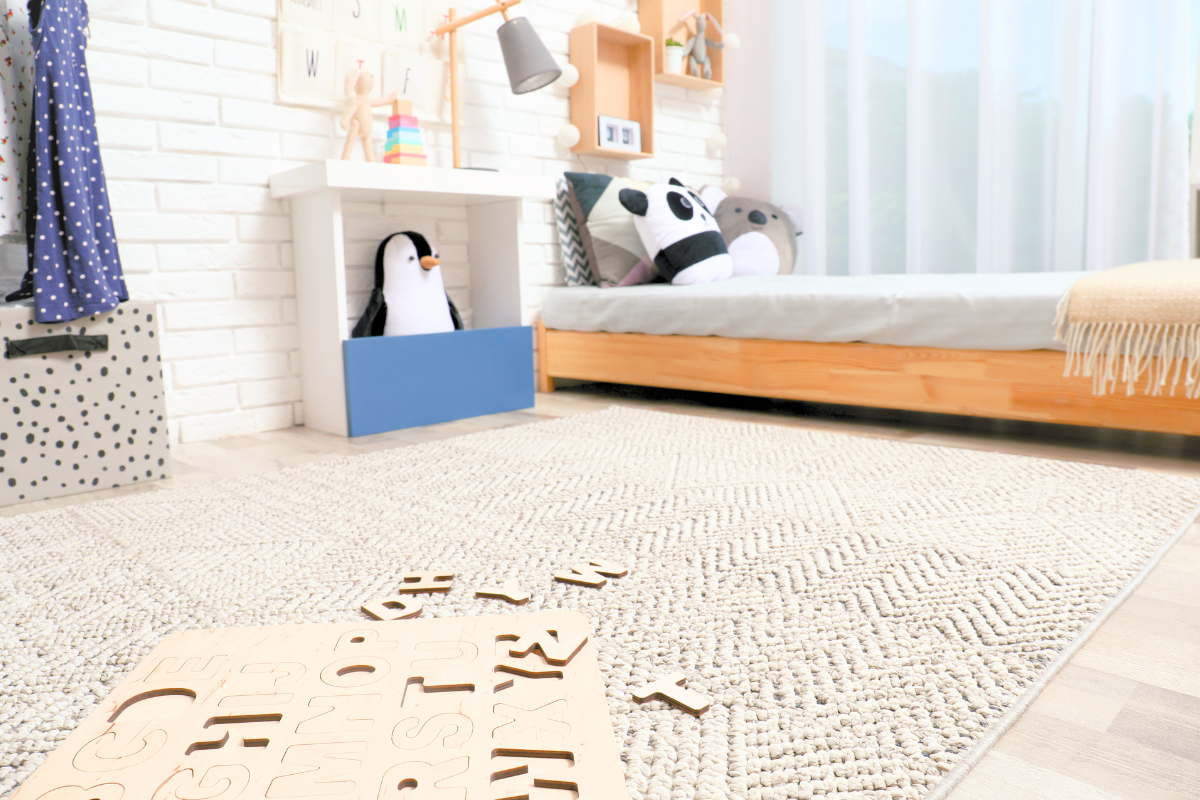
The Montessori method goes beyond toys, too. Montessori beds, for example, are designed to give children independence in their sleep routine. These low-to-the-ground beds let kids get in and out on their own. Meanwhile, a Montessori shelf is a low shelf that allows children to pick out their own toys.
Whether it’s a toy or a bed, the goal remains the same: foster independence, problem-solving skills, cognitive abilities, and essential life skills—all through play and exploration.
Key Characteristics of Montessori Toys
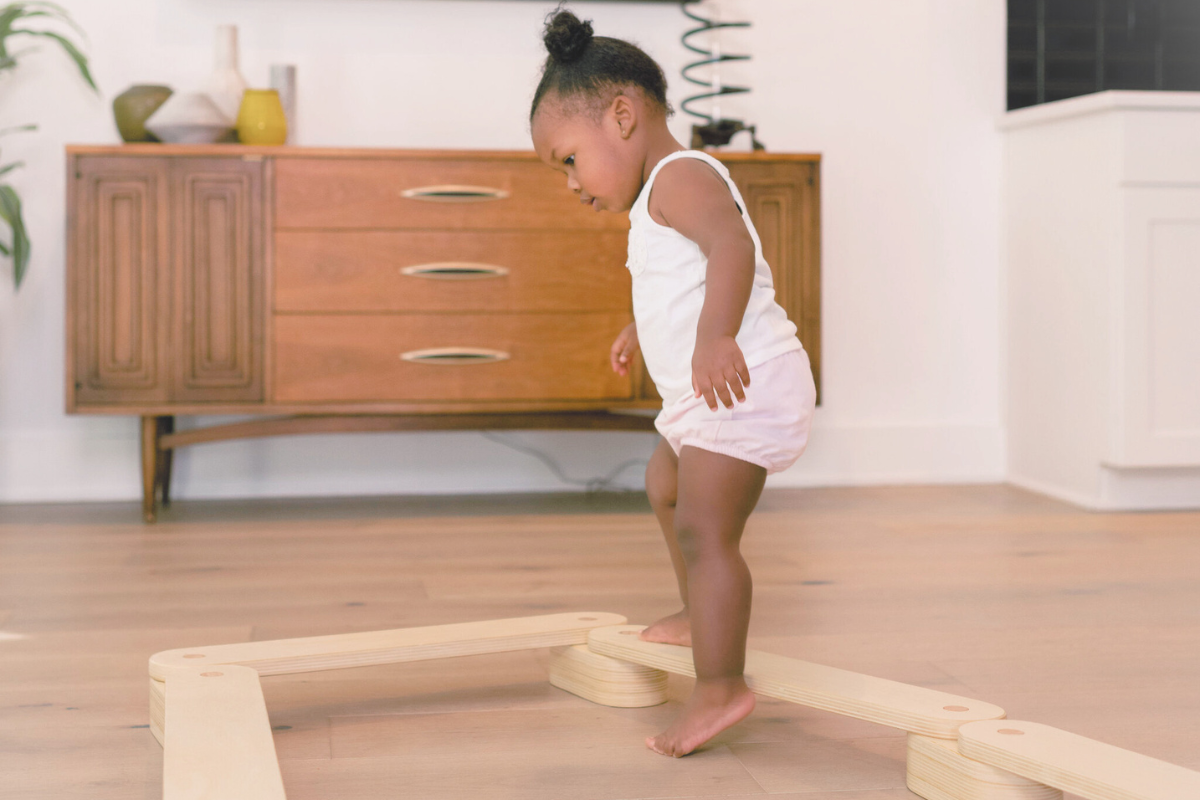
Montessori toys are thoughtfully designed to support your child’s overall development. They help kids build important skills like logic, focus, and concentration, all while creating a calm learning environment without overwhelming distractions.
Let’s explore what makes Montessori toys so unique.
No Electronics or Flashing Lights
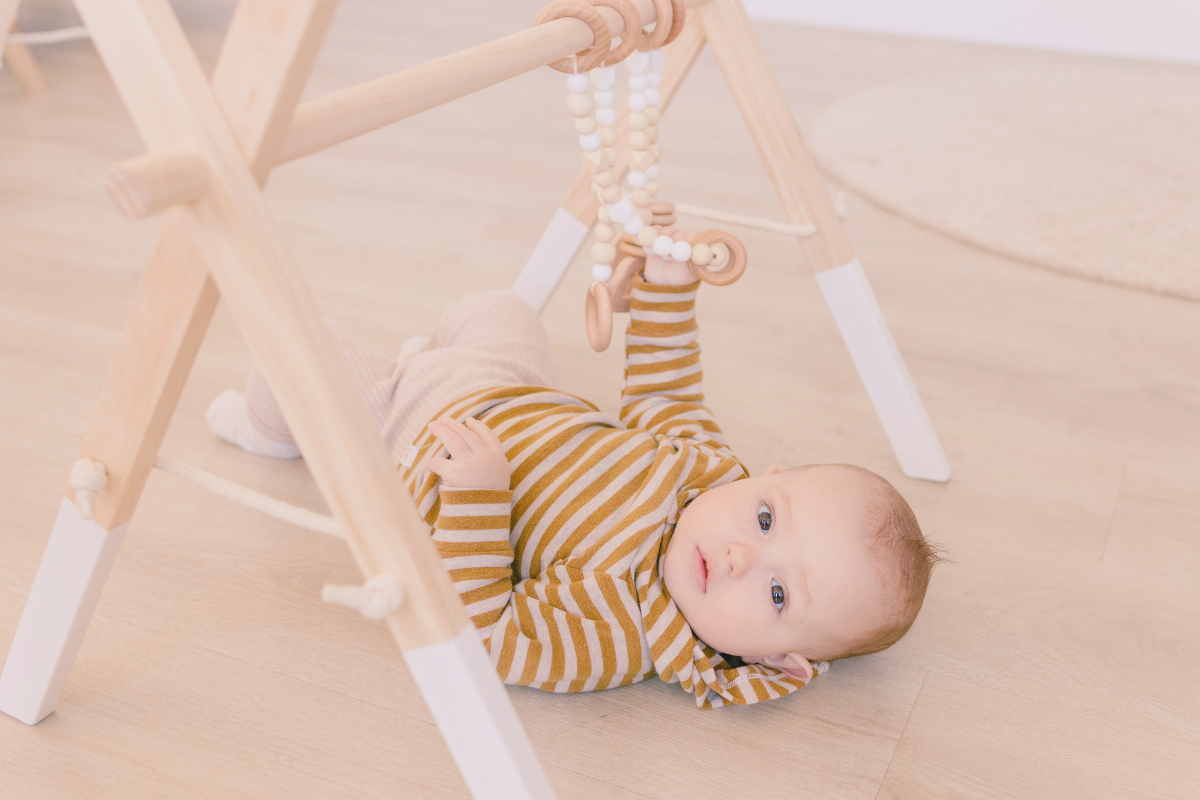
One standout feature of Montessori toys is their simplicity. No flashing lights or noisy electronics here!
A Montessori toy should encourage meaningful, hands-on exploration, allowing children to see how their actions lead to real-world results. Their soft, muted colors reduce distractions and help kids dive deeper into their play.
Pairing these toys with well-organized Montessori shelves can further encourage independence and promote learning by giving little ones easy access to their favorite activities all on their own.
Real-Life Representations
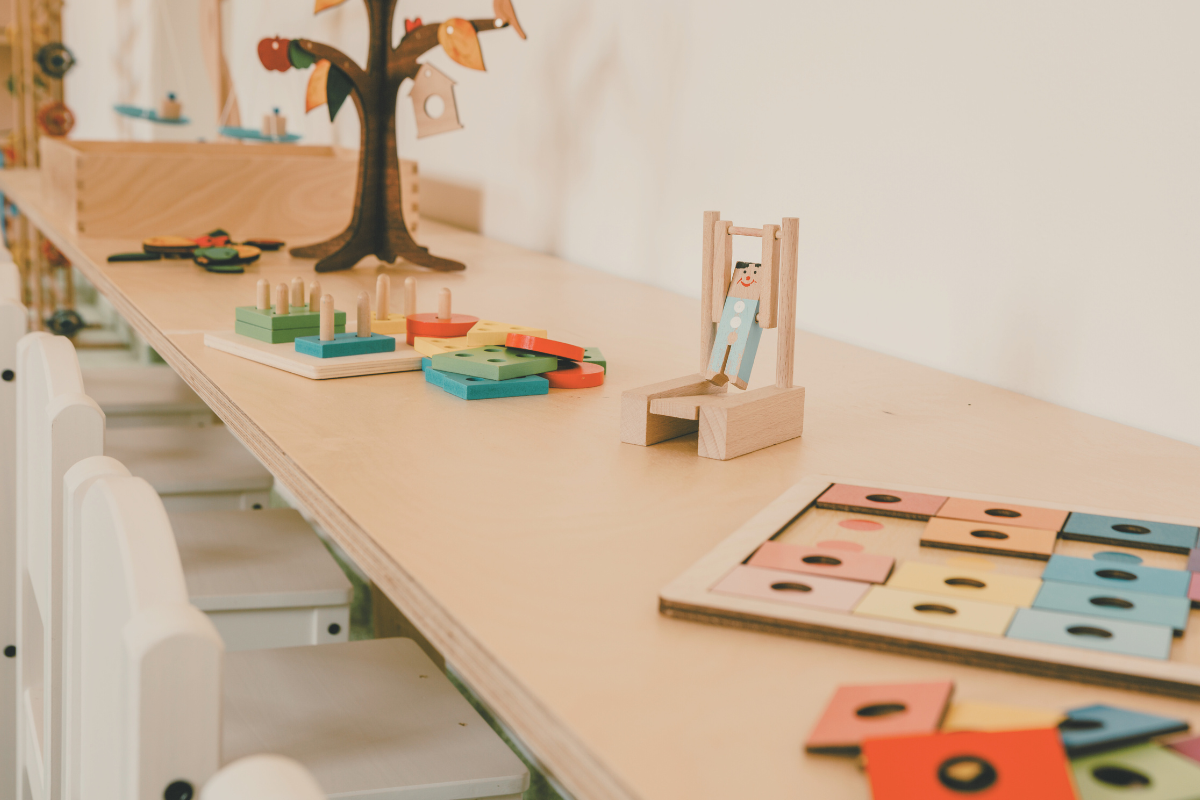
A Montessori-aligned toy often mirrors real-world objects, offering children their own learning through relatable, tangible experiences.
Wooden blocks, for example, can be used for building, counting, or even creative role-playing. Shape sorters teach geometry and coordination, while the classic abacus helps kids understand numbers in a fun, hands-on way.
Adding items like a climber arch into your child’s play area enhances their physical development while sticking to the Montessori method.
Natural Materials
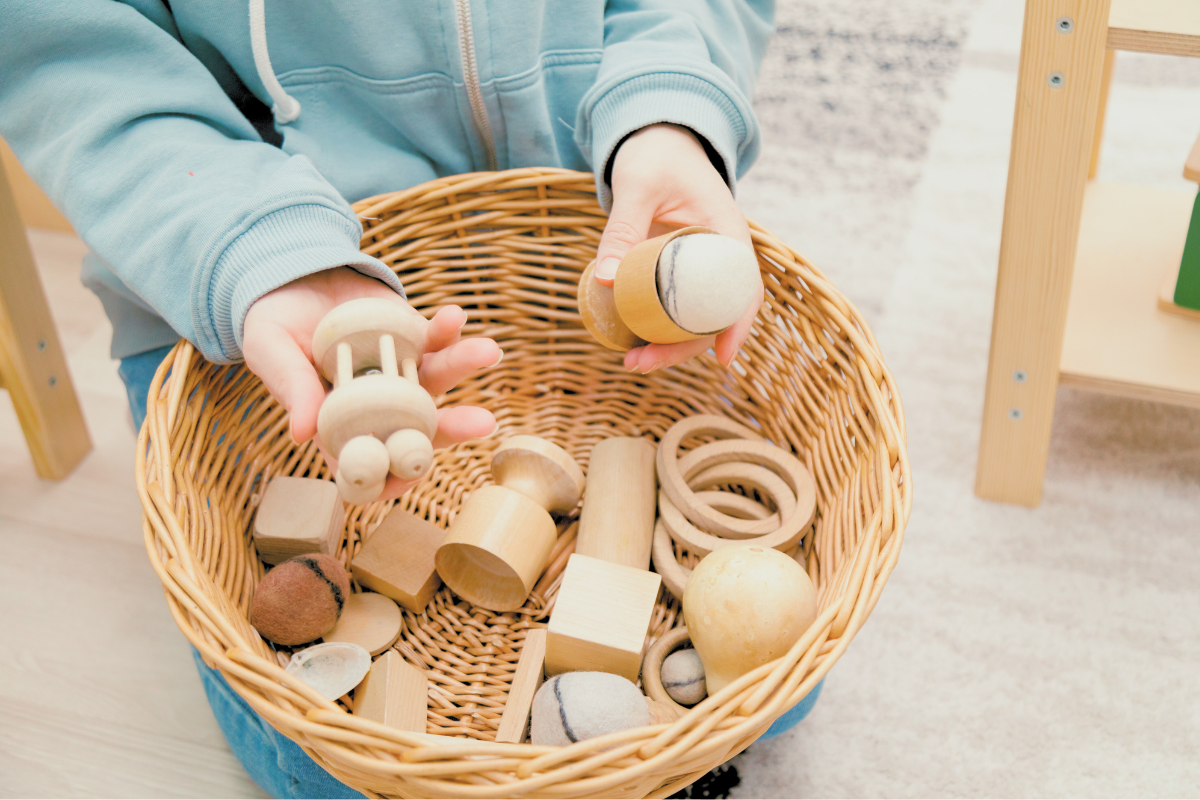
Made from materials like cotton, metal, and most commonly wood, Montessori toys are designed to engage the senses. Natural materials help kids experience different textures and temperatures, making playtime more enriching.
And it doesn't stop there. Wooden toys can boost your child's intelligence better than plastic toys, says Jeffrey Trawick-Smith, an Eastern Connecticut University professor who does his research at the Center for Early Childhood Education in Connecticut. Wooden toys offer a more holistic learning experience by evoking different senses as opposed to just one sense.
Besides, wooden toys offer long-lasting durability and are better for the environment than plastic alternatives—another great reason to choose wood over plastic in your child’s toy collection.
Focus on One Skill
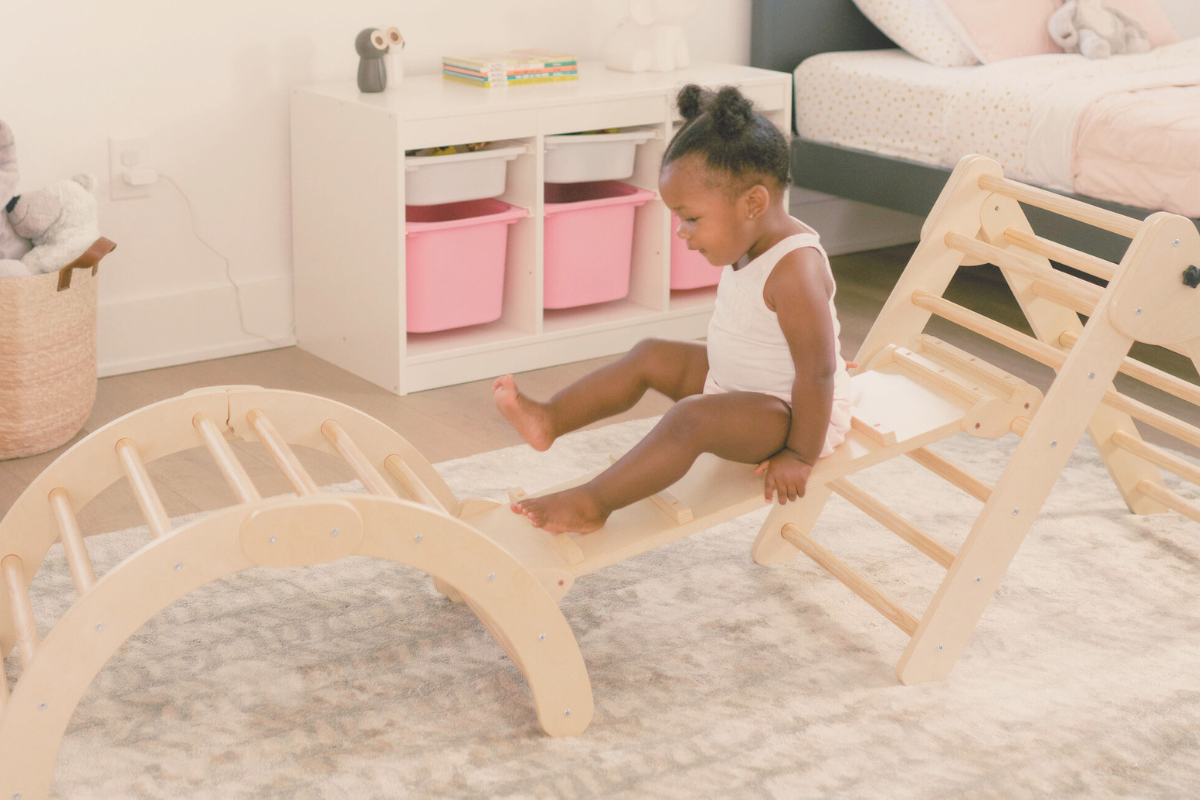
Montessori toys are all about helping children master one skill at a time. A focused approach like this encourages concentration and promotes deeper learning by allowing kids to fully explore one task before moving on to the next.
For example, Pikler triangles are designed for safe climbing. They're great for developing physical skills like balance and coordination. Climbing and maneuvering on the triangle allows children to strengthen their muscles while also improving motor skills.
The single focus on climbing allows children to hone in on their body movements and spatial awareness, giving them the time and space to truly master this physical activity.
This principle applies to other Montessori toys as well. A shape sorter, for instance, focuses on hand-eye coordination and problem-solving, while a wooden puzzle helps with fine motor skills and logical thinking.
By concentrating on one activity, children gain confidence and mastery in each skill area, which is a key part of the Montessori philosophy.
Benefits of Montessori Toys
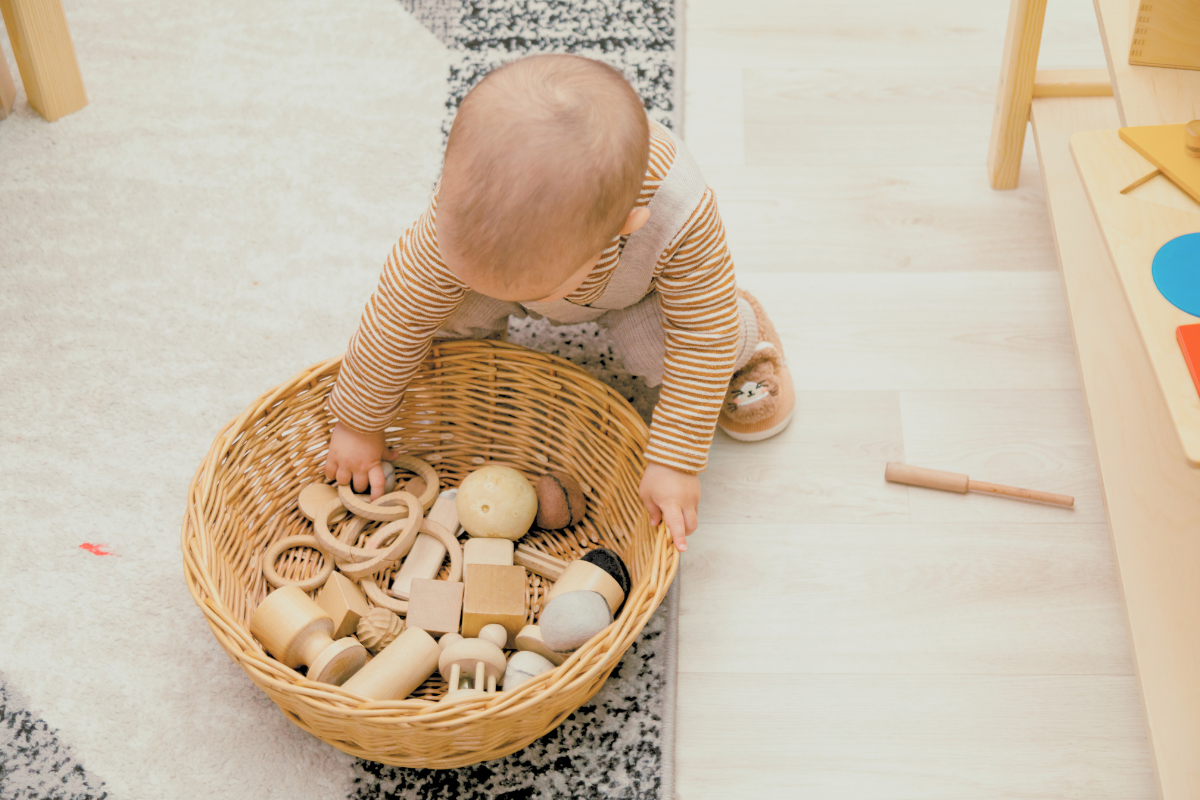
These thoughtfully designed toys do more than entertain—they help children grow, learn, and develop in exciting ways. Their simplicity keeps kids focused and engaged, promoting independence and creativity. And yes, they’re just as effective at home as they are in the classroom.
Let’s break down the main benefits.
-
Encouraging independence. One of the standout features of Montessori toys is how they encourage independent play. Open-ended options like climber arches can be used multiple ways, allow kids to explore freely. When children can choose their toys and return them to an organized Montessori shelf, they naturally develop responsibility and decision-making skills.
-
Boosting Physical Development. Physical skills get a real boost, too. Items like Pikler triangles and balancing beams challenge coordination, balance, and motor development in a fun way. As kids practice balancing and climbing skills, they build strength while safely pushing their physical limits.
-
Supporting Cognitive Growth. These toys don’t just build motor skills; they’re great for the mind as well. Cognitive skills like problem-solving and logic get a workout through activities like shape sorting and counting with an abacus. This hands-on learning creates a strong foundation for future learning while keeping the experience enjoyable and natural.
-
Enhancing Fine Motor Skills. When it comes to fine motor development, wooden peg boards, and other Montessori tools help fine-tune those delicate movements. These toys require careful hand-eye coordination, helping to strengthen small muscle control.
-
Fostering Creativity. The simplicity of Montessori toys leaves plenty of room for imagination. With no flashy lights or sounds, they’re developing their creativity without distractions -- whether they’re building, sorting, or imagining new games.
-
Eco-Friendly and Durable. You also get a longer-lasting, eco-friendly product with Montessori toys. Built from natural, sustainable materials like wood, they’re not only durable but also better for the environment compared to plastic options. Choosing wooden toys offers both quality and sustainability, connecting your child with the world around them in a meaningful way.
Choosing the Right Montessori Toys
Choosing Montessori toys is about more than grabbing something off the shelf. The goal is to encourage learning, independence, and creativity by matching toys to your child's developmental stage.
And the best part? Quality Montessori toys don’t have to break the bank.
Here’s what to keep in mind.
Age and Developmental Stage
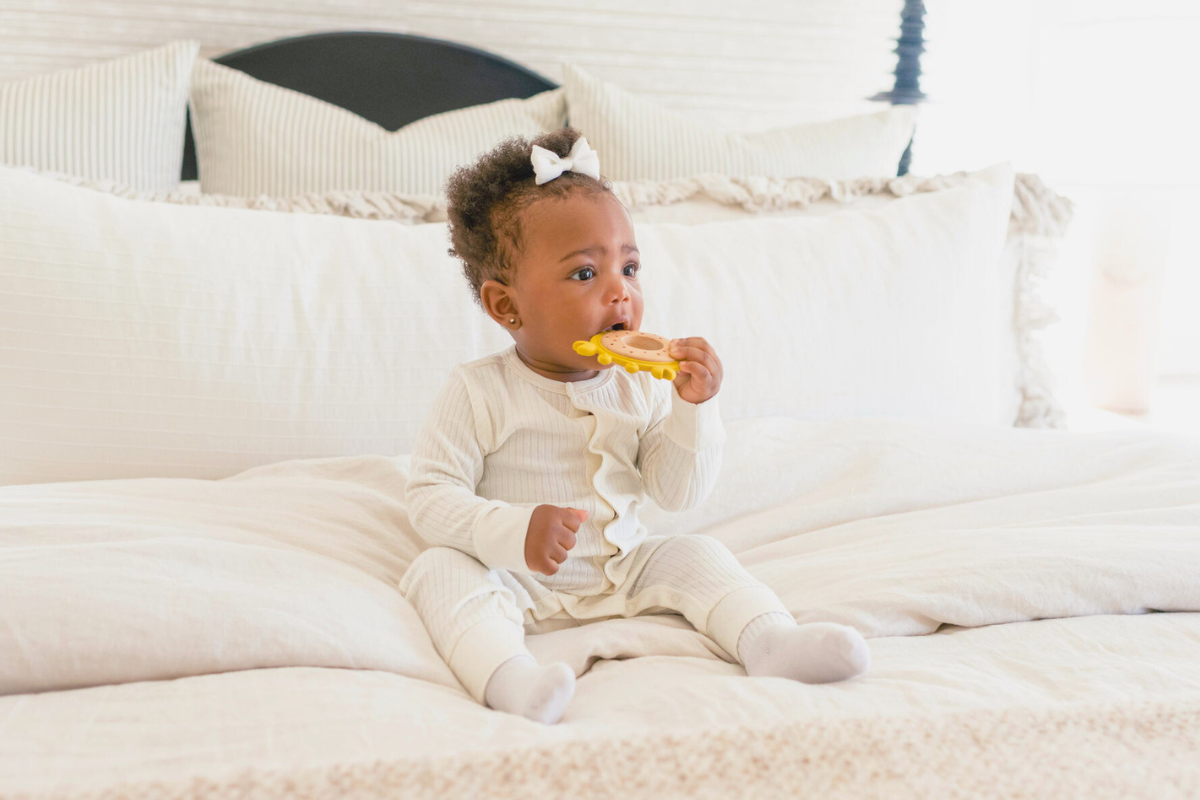
Start introducing Montessori toys when your child is ready to sit up and explore. Pick toys that create a simple challenge for them at their current developmental stage.
For infants, sensory toys like soft fabric balls or Poppyseed Play's wooden teethers are great.
Open-Ended vs. Closed-Ended Toys
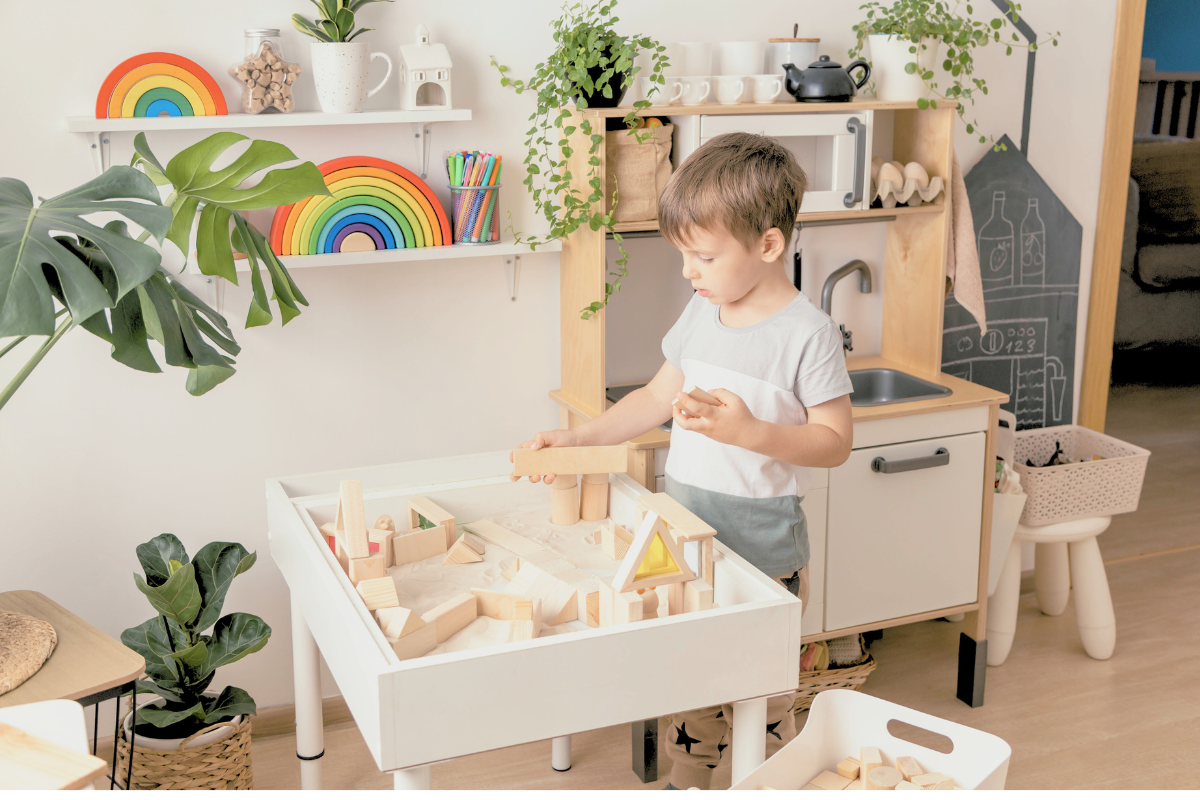
Open-ended toys, like blocks and stacking rings, inspire imagination and creativity through exploratory play. On the other hand, closed-ended toys, such as puzzles, focus on building specific skills. Matching the toy type to your child’s learning style is key to keeping them engaged.
Materials and Textures
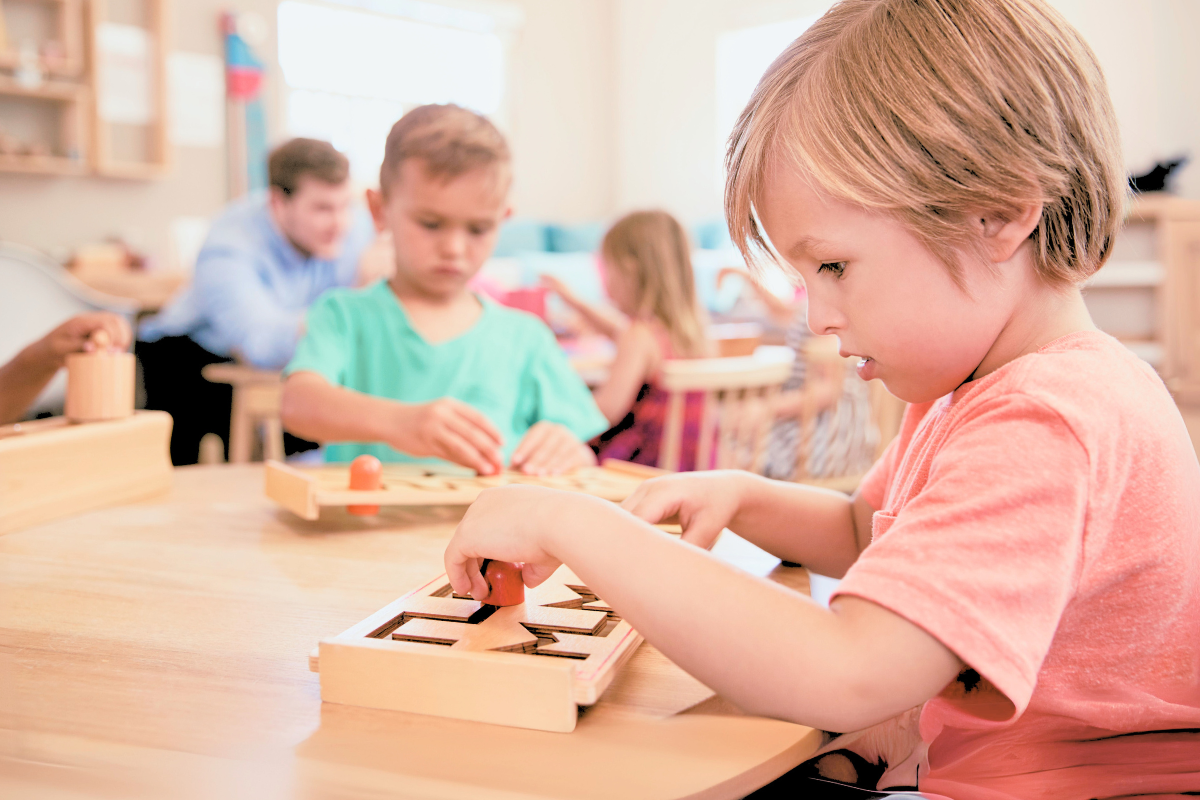
Montessori toys are typically made from natural materials like wood, fabric, and metal. These materials offer different textures, leading to rich sensory experiences and fostering strong connections to nature. They're also durable, eco-friendly, and non-toxic.
Wooden toys, in particular, provide a timeless and sustainable alternative to plastic.
Introducing Montessori Toys to Your Child
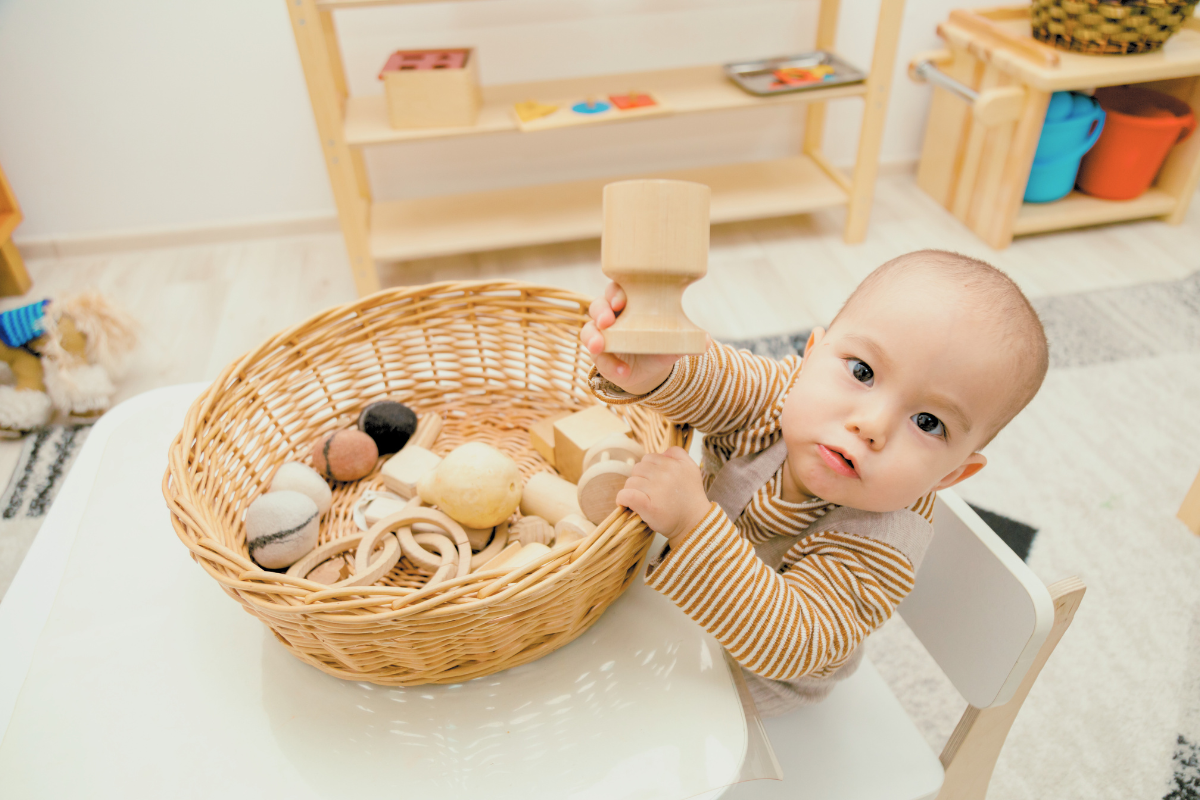
Introducing Montessori toys can be an enjoyable and rewarding experience for both you and your child. These toys offer opportunities for meaningful play while fostering independence and curiosity. With the right approach, you can create a playful environment that promotes learning and growth.
Here are quick and easy steps to make the introduction smooth and engaging:
-
Create an organized space. Arrange a tidy, accessible area that promotes independent play. Use Montessori shelves to display 8-10 toys at a time, allowing your child to choose what interests them.
-
Rotate toys regularly. Keep your child’s engagement fresh by swapping out toys occasionally, sparking new curiosity and maintaining focus.
-
Demonstrate how to use the toys. Show your child how to interact with new toys using slow, clear movements. Limit verbal instructions so they can focus on exploring.
-
Encourage repetition. Allow your child to return to toys like climber arches and balance beams, helping them build coordination, balance, and motor skills through repetition.
-
Allow open-ended exploration. Give your little one time to freely explore the toys. This supports the motor skill development of young children and strengthens brain connections through self-directed play.
Examples of Popular Montessori Toys
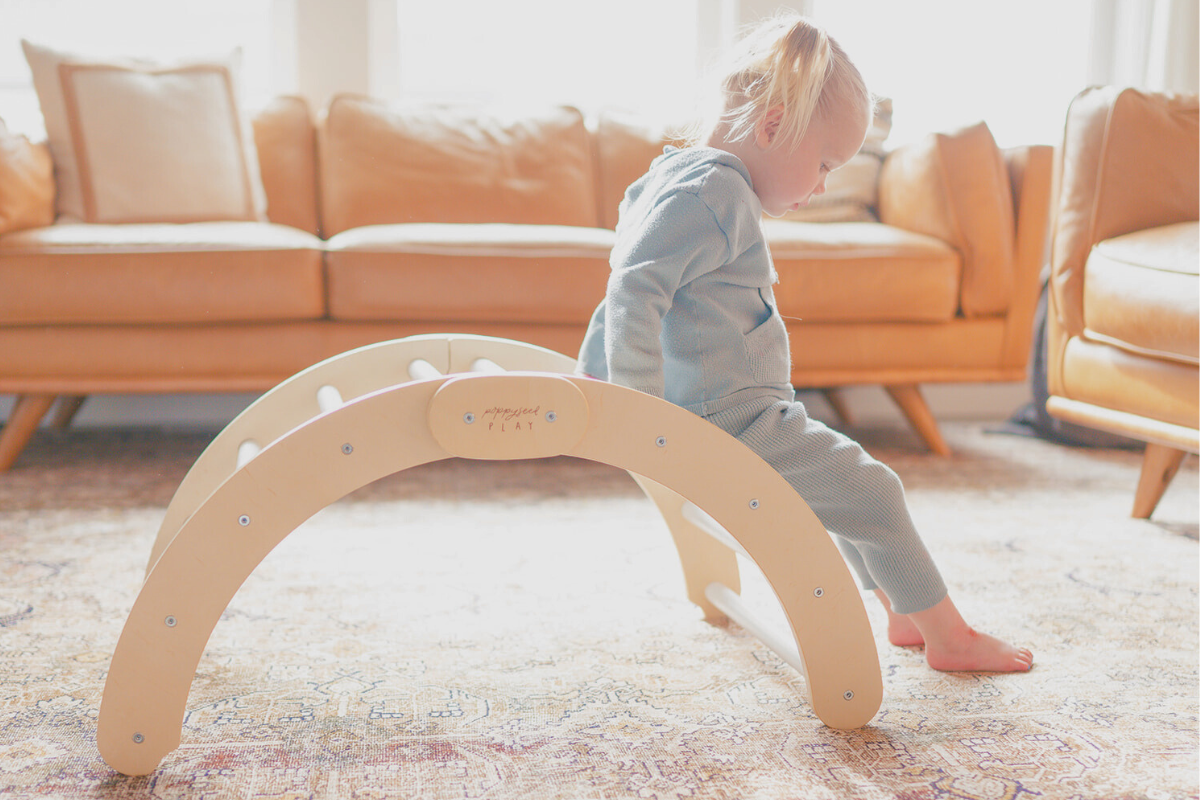
Montessori toys come in many forms, all designed to promote hands-on learning and skill development. From wooden blocks to shape sorters, toys that follow Montessori principles encourage exploration, creativity, and growth.
So, here’s a look at some popular Montessori toys and their benefits.
-
Wooden Blocks. These timeless toys foster creativity, concentration, and fine motor skills. Wooden blocks encourage imaginative play while helping children develop problem-solving skills and hand-eye coordination.
-
Pikler Triangles. A favorite for safe, skill-building activities, Pikler triangles offer children a space to climb and explore. These triangles help develop motor skills, balance, and confidence, making them a great addition to any playroom.
-
Shape Sorters. Perfect for early geometric learning, shape sorters enhance hand-eye coordination and fine motor skills. They also encourage problem-solving as children figure out how to fit shapes into the correct slots.
-
Abacus. A classic Montessori educational tool, the abacus teaches mathematical concepts through hands-on play. It helps children visualize numbers, learn counting, and explore multiplication while improving fine motor skills by manipulating beads.
-
Climber Arches. These versatile toys encourage physical development, allowing children to build strength, coordination, and confidence through climbing. The climber arch can also be used creatively as a fort or tunnel for imaginative play.
-
Wooden Puzzles. Simple yet challenging, wooden puzzles help children develop critical thinking, fine motor skills, and spatial awareness. They are a wonderful tool for quiet, focused play that stimulates the mind.
-
Balancing Beams. Designed to develop balancing skills, balancing beams promote physical activity while helping children improve motor control and spatial awareness.
Common Misconceptions About Montessori Toys
Despite their clear benefits, Montessori toys are often misunderstood. Misconceptions can lead parents to overlook these valuable tools for development. Let's debunk a few of the most common myths.
Simple Toys Are Boring
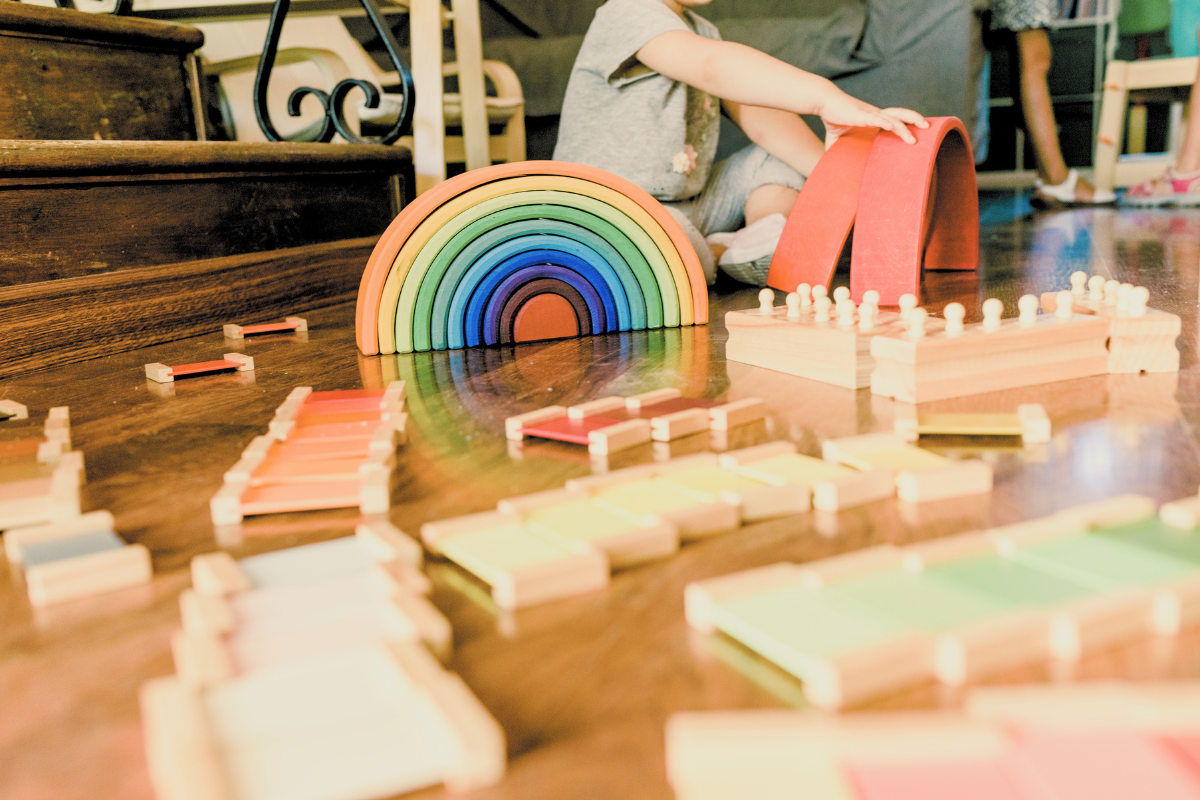
One common misconception is that Montessori toys, because of their simplicity, must be boring.
In reality, the lack of flashy features allows children to engage more meaningfully with their play. Items like climbing arches, stepping stones, and balance beams encourage physical development and exploration.
The lack of distractions in these toys allows children to explore different textures and materials, promoting motor skill development and sensory-rich learning experiences.
Colorless and Dull
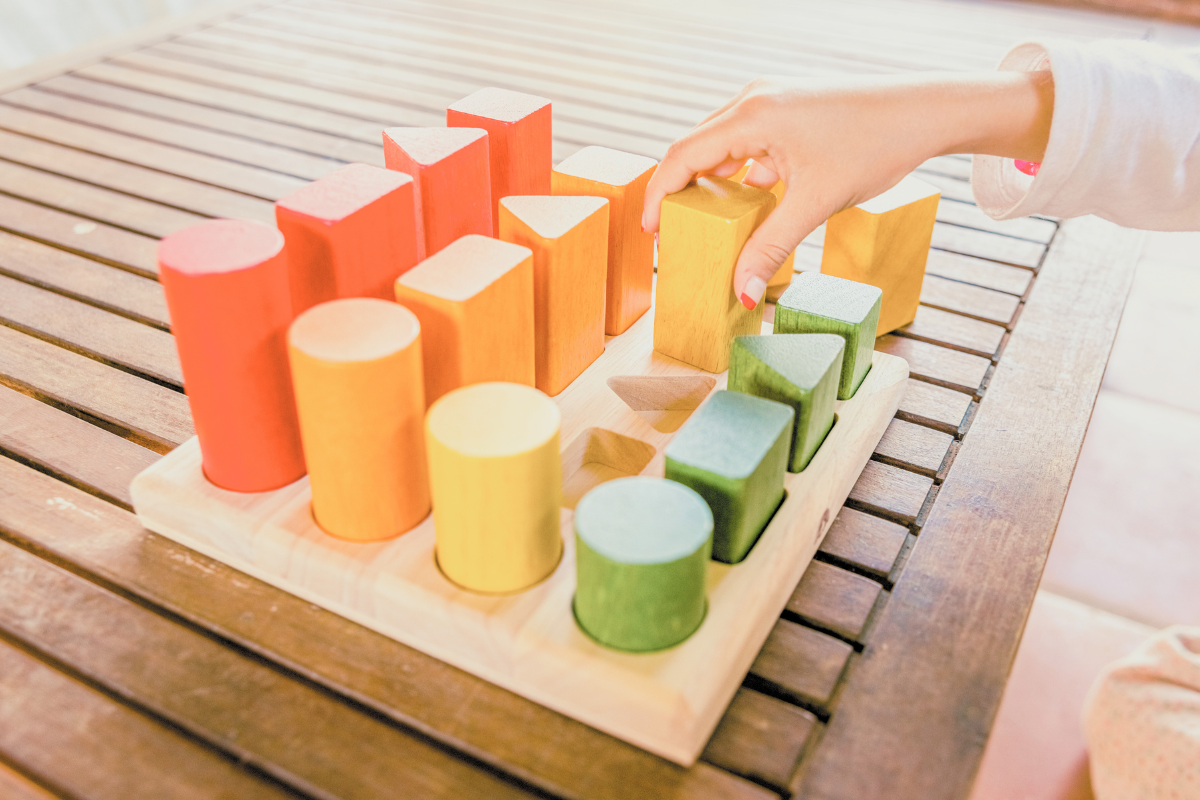
Some believe Montessori toys are dull because of their muted colors. Actually, Montessori toys can have colors, but they often feature softer, muted tones. This choice creates a calming environment and enhances concentration.
For example, baby gyms may not be bright and flashy, but they do wonders for infant development. The muted colors help reduce overstimulation, allowing children to stay focused and engaged.
Only for Older Children
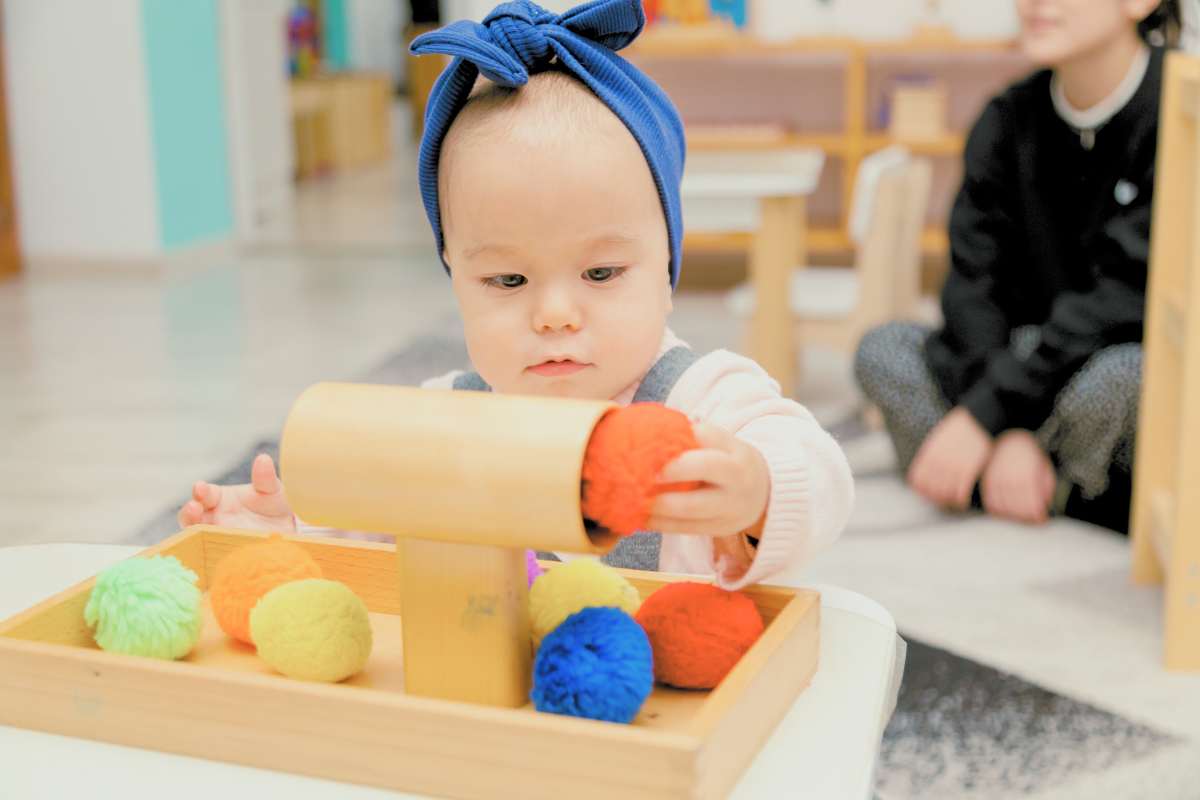
Another misconception is that Montessori toys are only suitable for older kids, typically preschoolers and above. But the truth is, these toys are great for all ages. There are plenty of Montessori toys designed for infants and toddlers.
Play mats, baby gyms, and even simple wooden teethers provide early learning opportunities, fostering independent play and sensory development right from the start. These toys grow with the child, supporting child development at every stage.
Final Thoughts
Montessori toys might seem simple at first glance, but that’s where the magic happens. These clever little tools help your little one learn, grow, and explore—all without the need for flashing lights or those catchy tunes that get stuck in your head for days – because let’s be honest, no one needs another round of Baby Shark.
These toys spark curiosity, encourage deeper learning, and might even give you a few peaceful moments while your little one is busy mastering a new skill.
What’s great about Montessori toys is that they grow with your child. From the soft play mats for your 1-year-old to the balance beams your 2-year-old can conquer, and the puzzles that challenge your 3-year-old’s problem-solving skills—there’s something for every stage. And let’s not forget, they look great in your home (no neon plastic in sight!).
So, go ahead and create your Montessori-inspired space. Fill it with thoughtful toys, show your little one how to use them, and then enjoy watching the magic unfold. You may even find yourself enjoying the calm, too. Because, let’s face it, a little less noise and a lot more creativity can do wonders for everyone in the house!
Frequently Asked Questions
What age should my child be for Montessori toys?
Montessori toys are designed for children as young as babies and can benefit older children well into their early years. The key is to choose toys that align with their developmental stage, allowing them to explore and learn at their own pace.
Why are Montessori toys mostly wooden?
Wooden toys are favored in the Montessori method because they provide a natural, sensory experience and are eco-friendly. Wood also offers durability and helps children engage with different textures, enhancing their learning and connection to nature.
How can I create a Montessori-inspired playroom?
You can create a playroom that adheres to the Montessori philosophy by using low, accessible shelves to organize toys, choosing natural materials like wood and cotton, and incorporating open-ended toys that foster independent play. Keeping the space calm and clutter-free encourages focused, creative learning.
